
Dr. Alan Shackelford was among the first to prescribe medical cannabis in the United States to a child. Her seizures stopped.
Thirty-five years ago an Israeli researcher documented the case for medicinal cannabis to treat epilepsy. It was one of these studies by a Prof. Raphael Mechoulam that Denver-based physician Dr. Alan Shackelford read when he was debating one of the hardest questions of his career. He was prescribing medical cannabis already in Colorado to help people with occupational injuries.
A desperate couple came to him. Their daughter Charlotte Figi was having 300 seizures a week. They read about an Israeli study that suggested cannabis might help. They implored him to try it on their daughter who was put on a do-not resucitate list in the hospital. Every seizure she had from Dravet’s Syndrome could potentially cause a heart attack.
Figi’s parents were heart-broken by the situation. They asked Shackelford: could he give their 5-year-old medical marijuana?
Charlotte had about 300 seizures a week. They read cannabis might work.
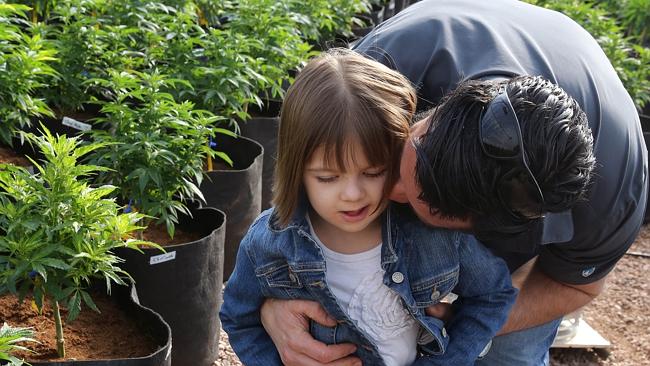
Charlotte Figi suffers from a rare form of epilepsy called Dravet’s Syndrome. Medical cannabis in the form of CBD oil was the only medicine that helped.
“I wasn’t intending on seeing her,” Shackelford tells me when we sat down to talk. “I had no experience with children. My oldest patient was 103, andthe majority of them were older people with back pain, and the treatments were working well on older patients, including some with seizures, but I wasn’t sure it would be appropriate for a child of five.”
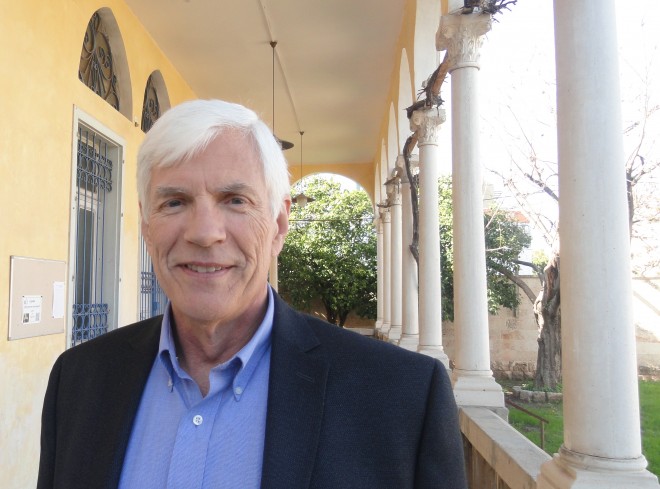
Dr. Alan Shackelford
Shackelford then poured over a stack of Charlotte’s medical records: “I decided that Charlotte would surely die if we didn’t do something to help her,” he tells Green Prophet. “As a doctor we take an oath that if we can help someone we must do what we can –– ‘cure when possible, comfort always’.”
Charlotte’s mother had brought to him a stack of convincing medical records. Then Shackelford made an appointment at his office: “There I met a girl just over a meter tall. On the way she’d had a seizure in the car, two in the waiting room and two while I was evaluating her.
“These were grand mal seizures. I made extensive notes. Charlotte was unresponsive to questions. She couldn’t eat, couldn’t drink and because nothing was working for her, she was no longer on any medicines.”
Shackelford was educated at Heidelberg Medical School in Germany and Harvard and certainly looks and plays the part of a conservative and evidence-based physician. He wasn’t the kind of doctor who gave prescriptions for cannabis out loosely. In fact, over the years he’d developed a pretty effective protocol he used by phone to screen out recreational users and over the stateline pilgrims looking for a free license to get high.
The lab that started cannabis research in the world
He went back to the research papers and poured over them again. It was the 1980 paper by Mechoulam that caught his eye: in it Mechoulam from the Hebrew University discussed the effectiveness of giving synthesized cannabidiol or CBD to patients with seizures–– in fact it was this particular molecule found in cannabis that shows therapeutic effects, without getting people high. In this paper 4 out of 8 people that used the CBD became seizure free.
Shackelford understood it was worth a shot.
Now the question was how to dose and administer marijuana to a little girl. And where to find plants with high levels of CBD (cannabidiol), but only with small amounts of THC (tetrahydrocannabinol), the primary psychoactive compound found in cannabis.
How to dose a child with CBD
Based on ratios presented in the study Shackelford decided on 6mg/kilo (or 3 mg/pound) of Charlotte.
But Charlotte couldn’t smoke a pipe or a joint.
Normally growers in the Colorado area pride themselves on plants very high in THC, or the molecule that gets you high. This is not what the doctor wanted to give to a small child.
Shackelford found a local grower that could supply a small amount to try. The ratios were 17 molecules of CBD to one molecule of THC but it cost an extraordinary $800 an ounce. This is 4 times the price of high-quality medical grade cannabis, which costs about $200 an ounce.
From this precious bit of plant Charlotte’s mom helped make an extract to give to her daughter.
Miraculously, “after the first dose the seizures stopped,” Shackelford told me. “She went from 300 seizures a week to none. But the family was concerned that they would have no more access to the drug.”
How cannabis strain Charlotte’s Web was born
Then a local group of marijuana growers, the Stanley Brothers from the area, heard about the potential for CBD to treat children and agreed to create an extract with the same high CBD content and low THC. Today this extract is called Charlotte’s Web and parents are moving to the Colorado area to access this treatment for children in similar situations.
USing CBD to treat children was a controversial treatment in 2012 and he knew it. Shackelford discussed the idea of using cannabis with Charlotte’s current doctor who thought it was worth a try, and met with in-house counsel at the Colorado Department of Public Health, which administers the medical cannabis program, and with the Department’s medical director to advise them of his decision.
It eventually took one full year for the Health Department to approve the unconventional but effective treatment, with a big part of the convincing coming by way of Mechoulam’s paper.
Why it took 35 years for neurologists to accept cannabis
When I spoke with Mechoulam about it he expressed a confusion as to why it took neurologists 35 years to understand that cannabis could work to treat seizures.
He continues important research on cannabis compounds from his laboratory at the Hebrew University in Jerusalem.

Raphael Mechoulam, discoverer of THC, CBD in medicinal cannabis
There are about dozens of active research teams in Israel directly working with cannabis as a medicine. These teams are associated with government-funded hospitals and universities. One just found that cannabis treats autism.
Over in the US, it was late and 2012 CNN was on the line: Sanjay Gupta, previously anti-cannabis, would go on to create a moving video about the medical benefits of cannabis featuring Charlotte and Shackelford. But by the time CNN called, Shackelford who was not looking for fame or “people moving here” had already decided that he would be immigrating to Israel.
Shackelford, who is Jewish and naturally drawn to Israel, says: “I was frustrated. I saw patients taking narcotics and know that thousands of people a year suffer from the side effects of opiate use. Over the counter aspirin causes 1,000 people a year to die from stomach bleeding.
“I wanted to see if I could do research on cannabis in Israel – with Prof. Yehuda Baruch.”
While cannabis is now legal to use in some form in 23 US states, it is a federally prohibited substance when it comes to researching it. As a research physician by training, “I knew I had to go somewhere else,” Shackelford says. “I was very encouraged by my trip to Israel in early 2013 and decided I would come back.”
In the US, committees that should be helping researchers find funding are essentially “looking at the consequences of cannabis abuse rather than at potential benefits, and I went back to find funding in the US so I could do research here in Israel.
“I’d fallen in love with Israel in 2007 and decided I didn’t want to do research from the US, in absentia.”
And that’s what he has done. But it’s not been easy. Back on a trip to Israel in late December 2014 Shackelford knew he had patients back in Denver counting on him. So for now it’s a shuffle: a few weeks in Israel, a few weeks in Denver.
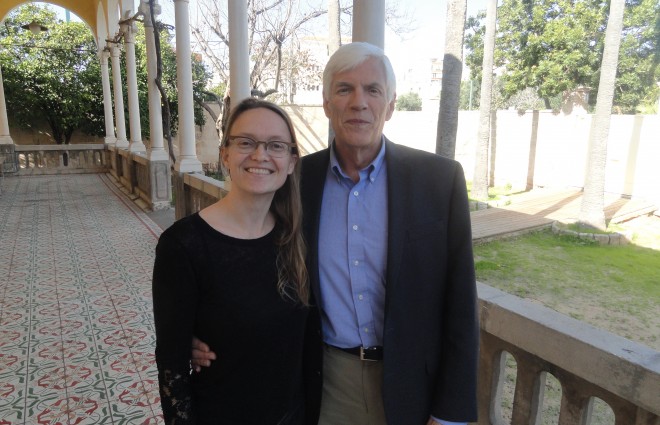
Karin Kloosterman organizes Israel’s first cannabis conference, CannaTech. Dr. Alan Shackelford will be the guest speaker.
“Now I have found people who have my shared vision.”
For Shackelford, a tall statured man, distinguished certainly – almost enlightened? – he knows it’s wildly inappropriate to tell his patients to take a ‘two puffs and call me in the morning”.
Formulating marijuana for medicine
What he’s referring to is the “medical formulations” available to medical cannabis patients in the US and elsewhere. Of course most are not remotely medical and they are not really formulations. Patients currently take medicinal cannabis by smoking it in joints, inhaling it through bongs and vaporizers, or ingesting it as baklava, gummy bears, brownies, hard candies or as drinks: “The inconsistencies are the problem and people don’t really know what’s in them,” Shackelford explains.
And therein lies the solution –– in Israel. Mechoulam and about ten other academic research teams are profiling cannabis strains by medical condition.
Some new companies like BreedIT are working on standardized breeding software for growers, while others like Cannabics are developing medical-grade slow-release pills to administer a reliable and even dose of oils.
Shackelford too has found his own “medicine” – in the halls of Israeli medical wards. Shackelford is now the medical advisor for a company he co-founded called OWC Pharmaceutical Research Corp. The company is publicly traded in the US. And this way he can live his true passion in Israel in the research arena.
OWC, or One World Cannabis, is now matching dosages and strains of cannabis to conditions and are testing them in clinical trials in Israel.
Cannabis research in Israel has been ongoing for the last 50 years. Patients have been using it legally for the last ten. An open source medical records system in Israel helps research doctors understand the effects of cannabis on conditions.
From this kind of data the One World Cannabis team started planning their trials and is now conducting clinical research studies with investigators at several renowned medical centers in Israel on a number of different serious medical conditions for which cannabis may be beneficial.
The history of cannabis as medicine
Shackelford’s journey started in Texas where was born; then in studies at the Heidelberg Medical School where he got the chance to do research as a student. After that Harvard for seven years shaped his “conservative attitude perspective on therapeutics and what is known as evidence-based medicine.”
By 2003 he was in Colorado practicing occupational medicine and in 2009 his story with cannabis began when he gave his first recommendation for medical cannabis to a patient suffering from work force inflicted pain.
All around him at the time the city of Denver was going through a big change with dispensaries opening everywhere like it was the Wild West. Of course in the beginning it was frustrating to hear from scared “soccer moms concerned that their children were going to start and shoot up heroin.”
It was equally annoying seeing women in bikinis in front of dispensaries swinging signs and competing for foot traffic from the streets.
Shackelford recalls: “Growing was haphazard. People would show up to dispensaries with their harvest in socks. And they would dump it out on the table, along with sand saying, ‘dude I’ve got some really good weed’.”
By 2010 Shackelford was getting involved in legislation and joined Senate hearings about why he thought cannabis was an important treatment for certain people. “I thought it was important to regulate it so the benefits would be there for patient use.”
He’s fought with judges, argued in tribunals, and led senators pushing for cannabis reform with scientific evidence and professional experience to back his claims. At one point he even had the law try and bust him: undercover cops had come to his clinic seeking “prescriptions” but the medical records never matched the story. So he denied them.
From seeing stark results in a leukemia patient to cannabis changing the lives of people with chronic pain in a few short months, then the story of Charlotte, Shackelford is convinced that medical cannabis works, and is planning a series of scientific investigations in Israel to study its treatment potential in many more conditions.
The next chapter of his life and career is now being written in Israel, and Shackelford is currently looking for a set of electric wheels to get around.
Dr. Alan Shackelford will be headlining Israel’s first ever CannaTech, a high-level networking event on February 5, that will connect Israeli startups in cannabis technologies to investors locally and globally. Investor spots still open. The event is founded by me – Karin Kloosterman – founder of Green Prophet, the CEO of the medical cannabis growing robot flux, and will be invite only.
Read more on cannabis technologies and research from Israel:
Raphael Mechoulam changes medical cannabis globally
Cannabis makes PTSD effects disappear
Images: Dr. Alan Shackelford top, via Twitter; Charlotte Figi, News.com; Raphael Mechoulam, Courtesy; Lower Dr. Shackelford, Green Prophet

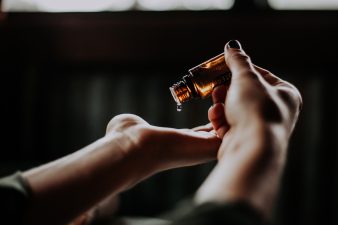
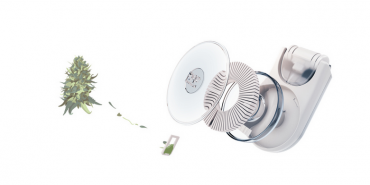

2 thoughts on “How Alan Shackelford changed cannabis as medicine”
Comments are closed.